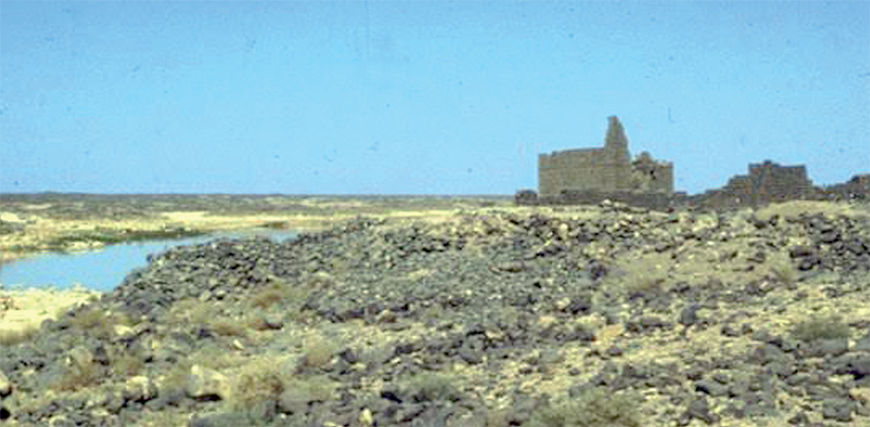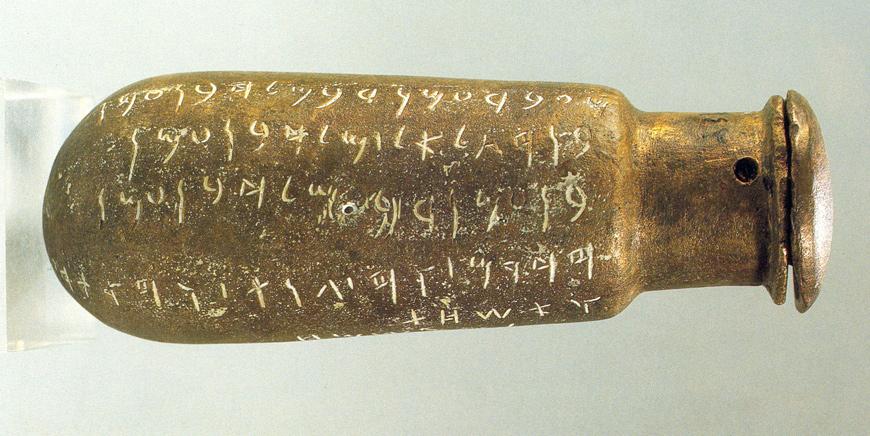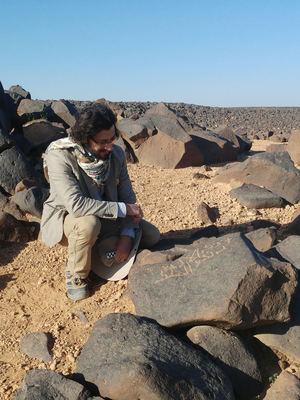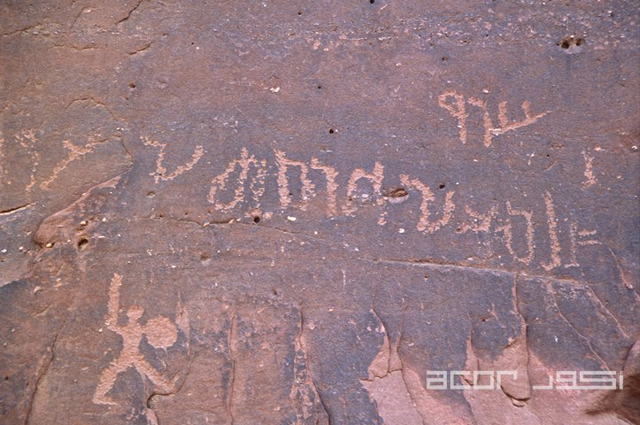You are here
Unpublished Safaitic inscriptions of north-eastern Jordan: Studying nomadic writers’ literacy, lifestyle
By Saeb Rawashdeh - Feb 11,2024 - Last updated at Feb 11,2024

A Finish scholar, Ilkka Lindstedt, from The University of Helsinki, found 15 previously unpublished Arabic inscriptions from the north-eastern Jordan (Photo courtesy of ACOR)
AMMAN — Northeastern Jordan was a significant area for inscriptions dating from different historical periods. Petroglyphs are typical of the Neolithic period in the Black Desert, but the northeast of Jordan also holds inscriptions from the early Islamic Period. A Finish scholar, Ilkka Lindstedt, from The University of Helsinki, found 15 previously unpublished Arabic inscriptions from the north-eastern Jordan.
“Three of the inscriptions are explicitly dated to the late 8th century AD,” Lindstedt said, adding that other inscriptions are also from the same period, based on the paleography.
Nine inscriptions of the fifteen are written by the members of the same family, Banuʿ Amir Yamami, Lindstedt said, adding that survey took place near the modern town of Al Ruwayshid.
“The survey’s goal was to record inscriptions [in Safaitic, Arabic, and possibly other scripts or languages] found on the borders of the basalt stone desert, and the Hamad, the inner desert, along the wadis near Al Ruwayshid,” Lindstedt said, stressing that he wanted to concentrate on Banu Amir Al Yamami family.
Through the epigraphic research in the Syro-Jordanian Desert, scholars discovered a large number of inscriptions, which showed interesting details about the literacy and the daily life of the inhabitants of the desert.
“The literacy — or at least the epigraphic habit — of the inhabitants of the Jordanian Basalt Desert was rather high in four historical periods and low in others. These eras have been noted in earlier surveys and studies, and during the Badia Epigraphic Survey 2018, I was able to witness this firsthand”, he explained.
“The exact limits of the period when the Safaitic inscriptions were written are still unclear, but conventionally it is understood that the Safaitic inscriptions date from the first three centuries before and after the beginning of the Common Era,” Lindstedt noted, adding that the Safaitic corpus is vast: Over 40,000 inscriptions have been published so far and many more await discovery and publication.
The Safaitic inscriptions can be categorised as graffiti, which are non-commissioned texts. The majority of writers of Safaitic were nomadic, a fact that is explicit in their lapidary texts, Lindstedt said.
Nomads had constant contact with the settled populations of the nearby regions, some of them learning Greek, for instance. Interestingly, it seems that Safaitic was not used to write on perishable materials such as papyrus.
“Safaitic is, strictly speaking, a script; the dialects expressed in this script belong arguably to the Old Arabic continuum. The Safaitic script is related to other Ancient North Arabian scripts, although their developments are somewhat unclear, Lindstedt underlined, adding that wide literacy (or at least the skill to write short and sometimes longer inscriptions) among a nomadic population is somewhat surprising.
Moreover, tens of thousands of Safaitic inscriptions were written by a very large number of different individuals, he elaborated, telling that Safaitic disappeared a few centuries before Islam.
“The reason for the disappearance of the Safaitic and other Ancient North Arabian scripts is unknown. During the period when the Safaitic inscriptions were produced, some Greek and Nabataean inscriptions were also engraved in the region,” Lindstedt highlighted.
The second period of higher epigraphic activity in the area starts in the late 8th century AD.
The earliest Islamic-era dated inscription found in Jordan is the building inscription of Qasr Burqu. It is dated to 700–701AD; nowadays, it can be found in the museum of Qasr Al Azraq, the scholar said.
“We also have an inscription from 710AD and a few from 718–719AD. However, it was the 8th century AD that was the most active in the early Islamic period in Jordan,” Lindstedt outlined.
Since only a minority of them has been explicitly dated by their writers, scholars have to resort to paleography to assess their dates.
The 13th century AD (the Mamluk era) brings about resurgence in the engraving of inscriptions in the Jordanian desert.
“The latest phase of high epigraphic habit [at least in the surviving evidence] begins in the modern period, especially after the 1970s, when literacy increased substantially among the Bedouins of the area through government efforts to educate them in the Jordanian arra,” Lindstedt underscored.
Related Articles
AMMAN — The German Protestant Institute of Archaeology recently held the second lecture of a series dubbed "Epigraphic Testimonies from Jord
AMMAN — Recent discoveries in the Black Desert in eastern Jordan offered a glimpse into the religious practices in ancient times, according
AMMAN — In order to have centralised information about inscriptions from Ancient North Arabia, a group of scholars created “The Online Corpu



















